Russian village in the American forest
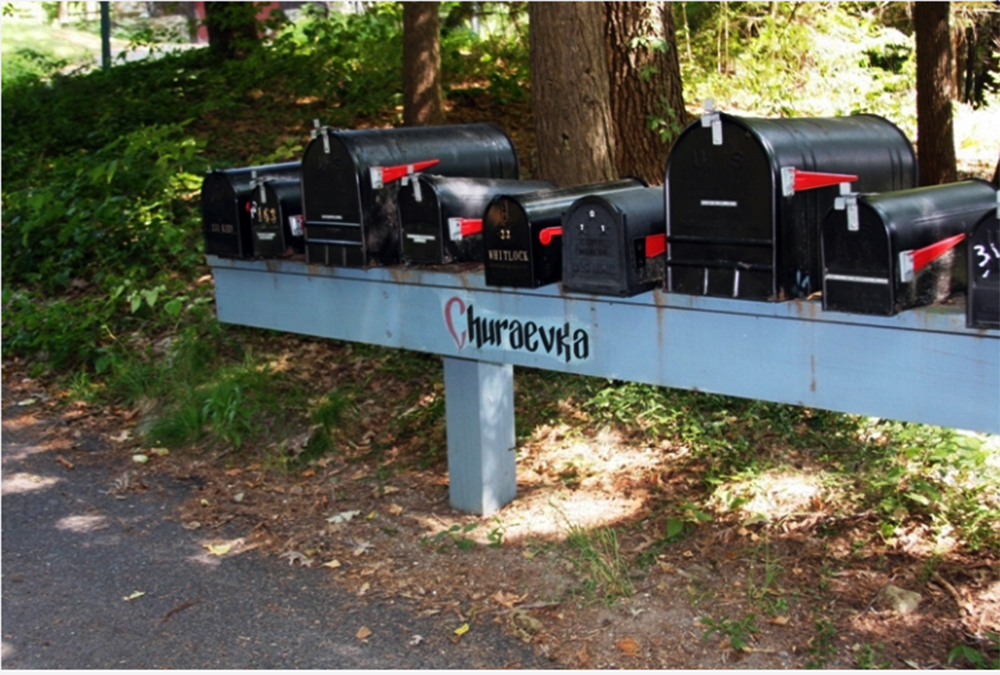
The Russian village of Churaevka is located in a beautiful wooded area, 160 km from New York. Photo: http://picssr.com/tags/churaevka
The designations of this locality on the maps are not. Mention of Churaevka in guidebooks either. The once popular village of Churaevka is now included in the so-called “museum quest” - local amateur historians who study the history of their native state in local libraries and museums participate in such.
We are literally “driven over” this village. They were returning from the Museum of Indian History and accidentally saw a leaning sign with the inscription “Russian Village”. Of course, they could not pass by. We stopped, talked to the locals, admired the district.
Having driven into Churaevka, you will first be surprised: small farm houses, which are quite common for American backwoods. And if it were not for a special pointer, one would think that the wrong turn.
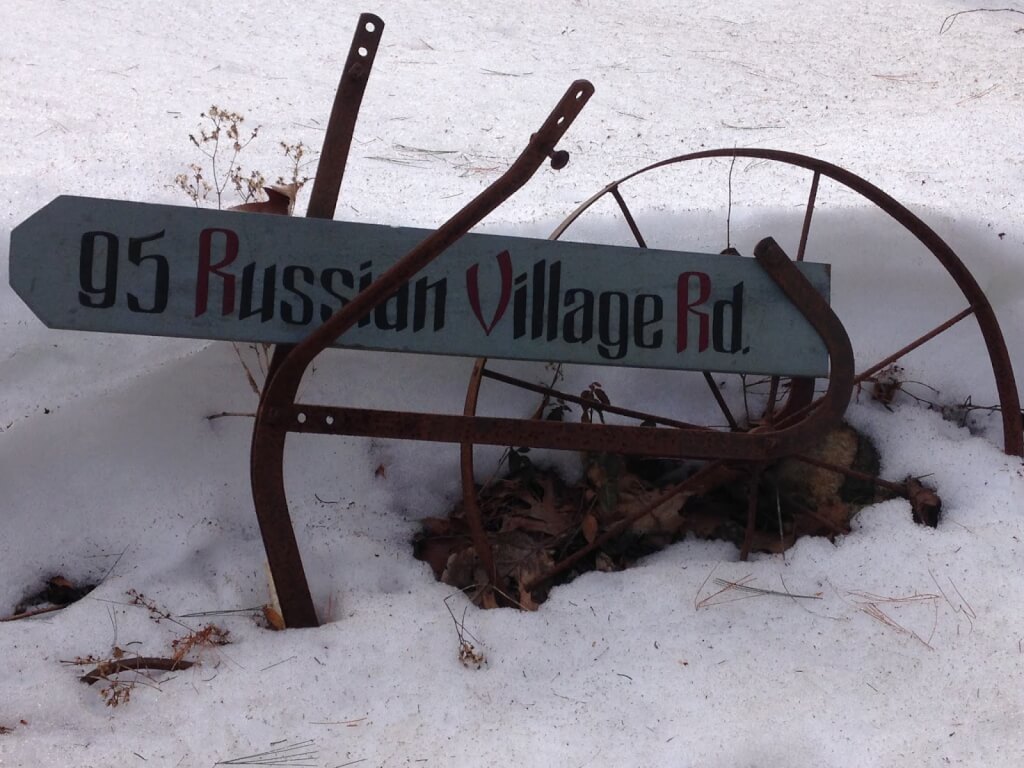
Photo by Victoria Averbukh
Churaevka was founded in 1923 by writers and artists who emigrated from Soviet Russia. The leaders of the community were the son of Lev Tolstoy, Ilya and the Siberian writer Gregory Grebenshchikov. Initially, Ilya Lvovich planned to use his home in Connecticut as a “summer cottage”, but then, after meeting Gregory Grebenshchikov, the idea of a “Russian community” was born, and Russian intellectuals who had fled from Soviet power and desperately built around the house of Tolstoy pissed off in a foreign land. Composer Sergey Rakhmaninov and aircraft designer Igor Sikorsky, also emigrants, helped to collect money for the construction of Churaevka and community support.
By the 30-th years of the XX century in Churaevka there were 46 houses (including a shelter for new immigrants), there was a publishing house “Alatas”, founded by Grebenshchikov and his friend Nicholas Roerich.
Alatas published books by the Roerichs, Balmont, many Russian classics and, of course, Grebenshchikov himself. Actually, the village was named Churaevka in honor of the mythical Siberian village, which is mentioned in Grebenshchikov’s multi-volume epic “The Churaevs”. It is surprising that the book, which the writer himself considered the main work of his life, is now almost no one remembers, but his other brainchild - the Russian village of Churaevka - still lives and still attracts local historians and rare tourists.
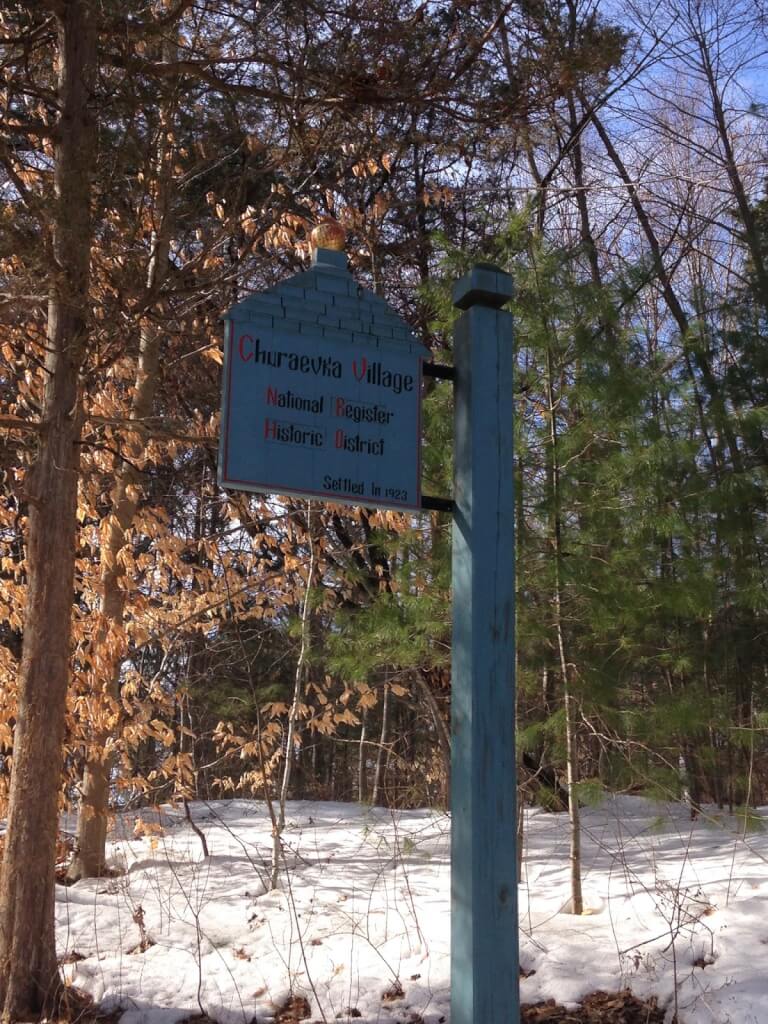
Photo by Victoria Averbukh
In Churaevka, Tolstoy and Grebenshchikov gathered all the color of the then Russian emigration: actor Mikhail Chekhov, inventor Leonid Dunaev, choreographer Mikhail Fokin, biologist Viktor Luzanov visited it.
The main building in the village is the Chapel of St. Sergius of Radonezh, which was built in 1932-33 according to the design of Nicholas Roerich and painted by him personally. The construction of the chapel was funded by contributions from members of the community, mainly by Igor Sikorsky, the most famous and wealthy immigrant in those days.
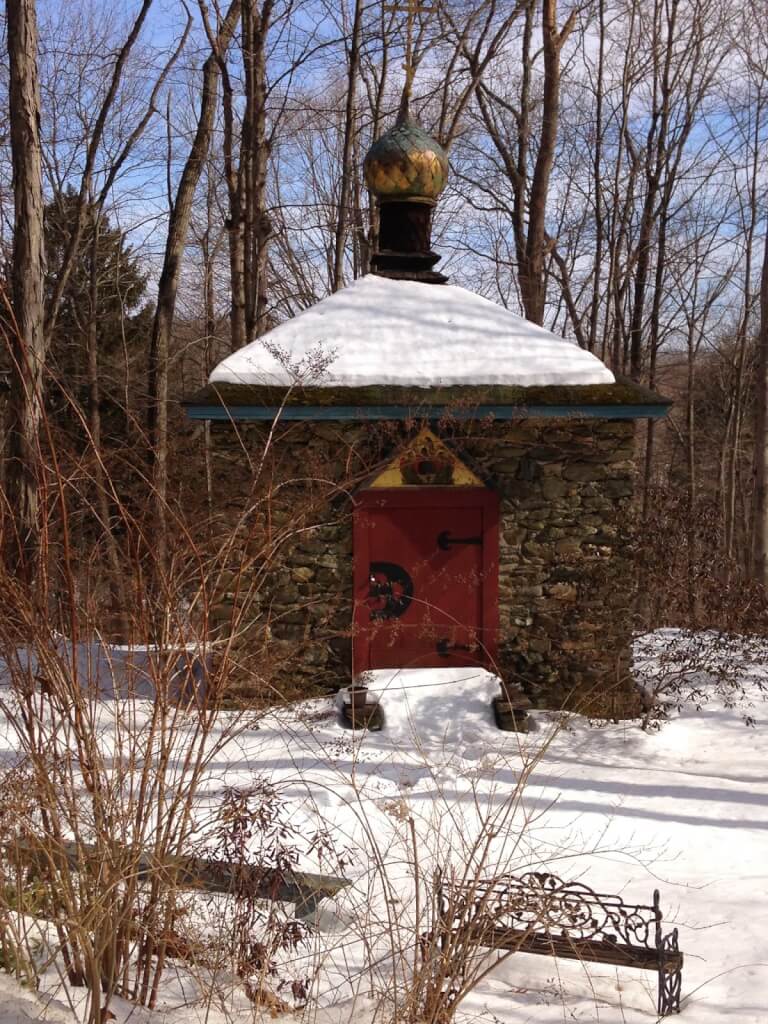
Photo by Victoria Averbukh
The service here is held twice a year, the rest of the time the chapel is locked. But through the dusty windows you can see its decoration.
And here is the chapel during the service (photos of the local historical society).
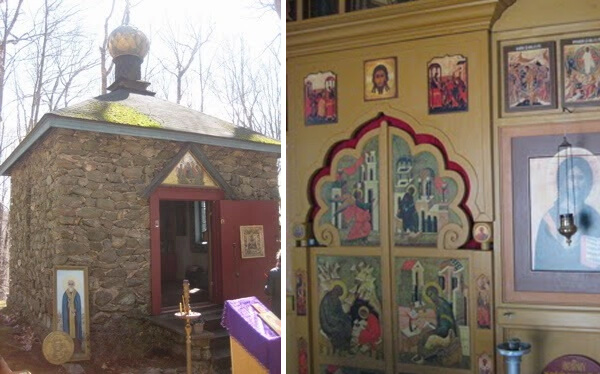
Photo by Victoria Averbukh
After the death of Ilya Tolstoy and the departure of Gregory Grebenshchikov to the state of Florida in 1941, the community, having lost both spiritual leaders and financial support, gradually ceased to function. The village began to decline, the children of Russian emigrants had already grown up as Americans, and their grandchildren even more so.
According to one of the local residents, American Steve (without the slightest drop of Russian blood, he feels great in the Russian village, as if confirming the well-known saying that man does not paint a place), now only 3-4 families of the descendants of the Churaevka founders live here, Yes, and they often come only in the summer, using the house as a garden. And the new inhabitants of Churaevka, the Americans, the same as Steve, accentuate their address - the names of the streets have been preserved since the old times, when Churaevka was not only considered a Russian village, but it was in reality.
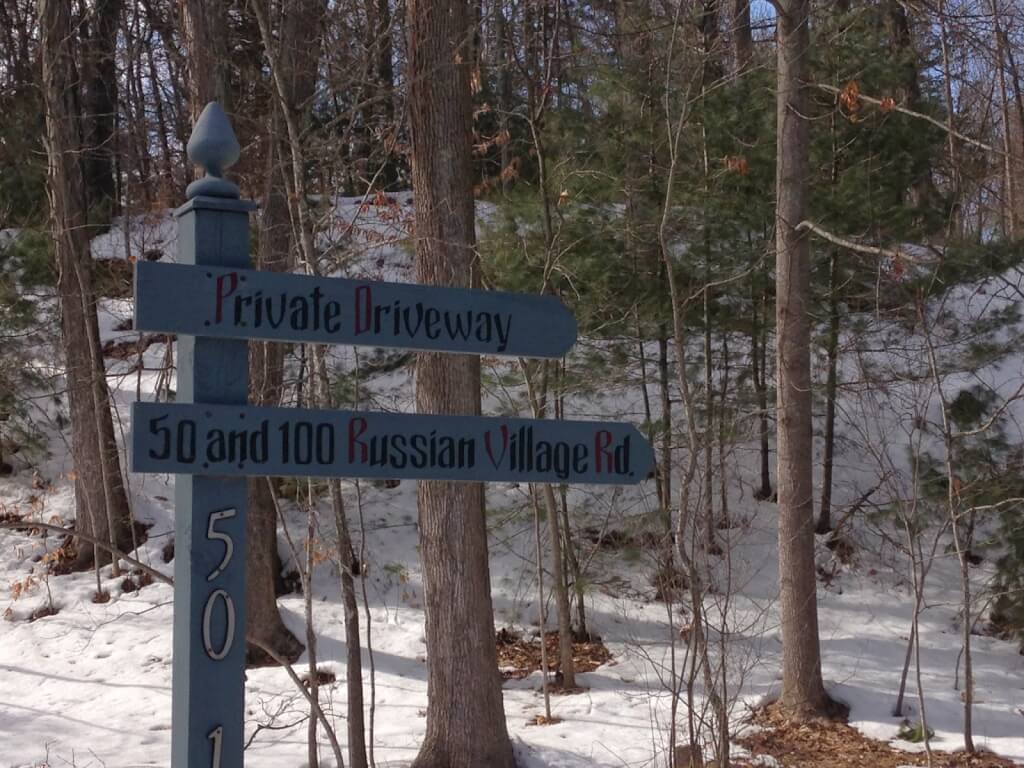
Photo by Victoria Averbukh
And the houses themselves are no longer similar to the Russian chambers, but rather quite typical American cottages. And although the Connecticut forests are still similar to the Russian forests so dear to the heart of the emigrant, the signs are American.
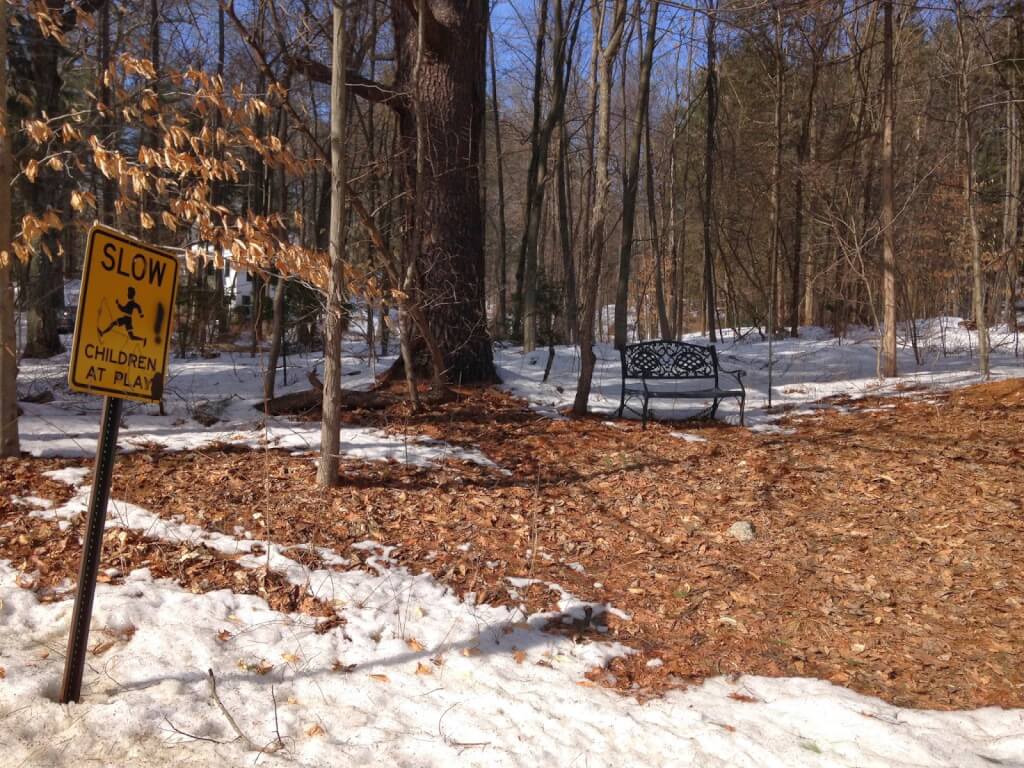
Photo by Victoria Averbukh
And on the hill near Steve’s house there is still a well. Of course, they no longer use it, but they cherish it as a local landmark.
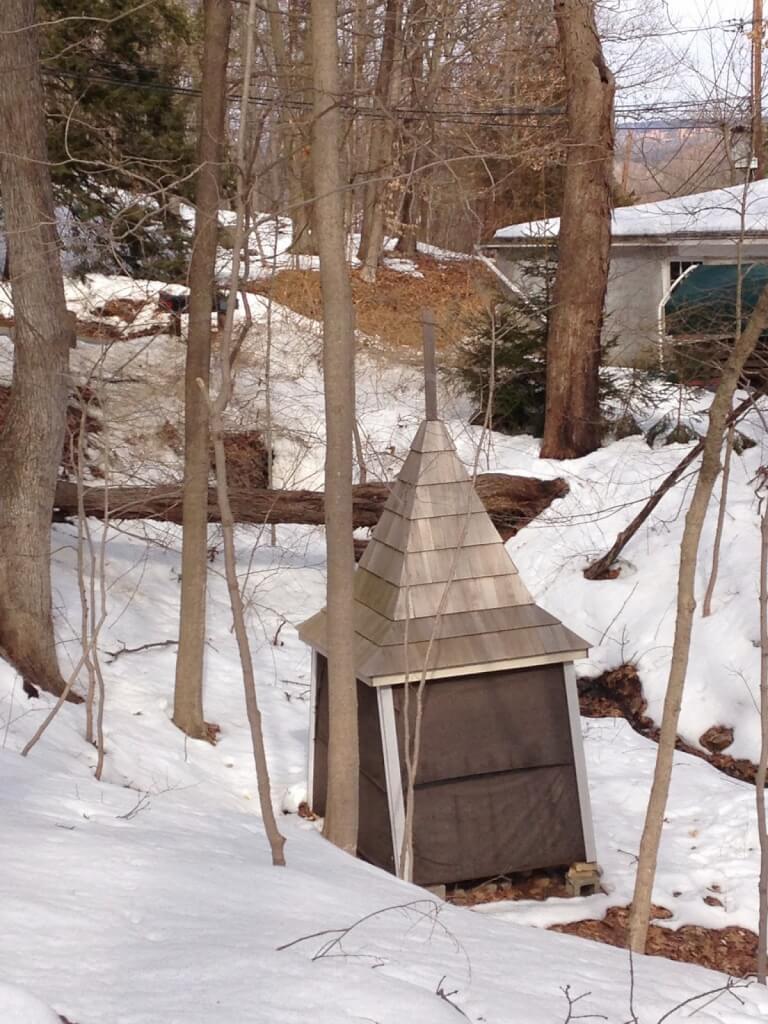
Photo by Victoria Averbukh
There is also a private street here, which is also very typical for America. Pointers in Russian style, common to the whole village, but signs with “cautiously, angry dog” advertisements are already available to all Americans. And, of course, a pointer that the water here without pesticides is unlikely to be found in Russia.
Judging by the names on the mailboxes, some descendants of immigrants really still come here.
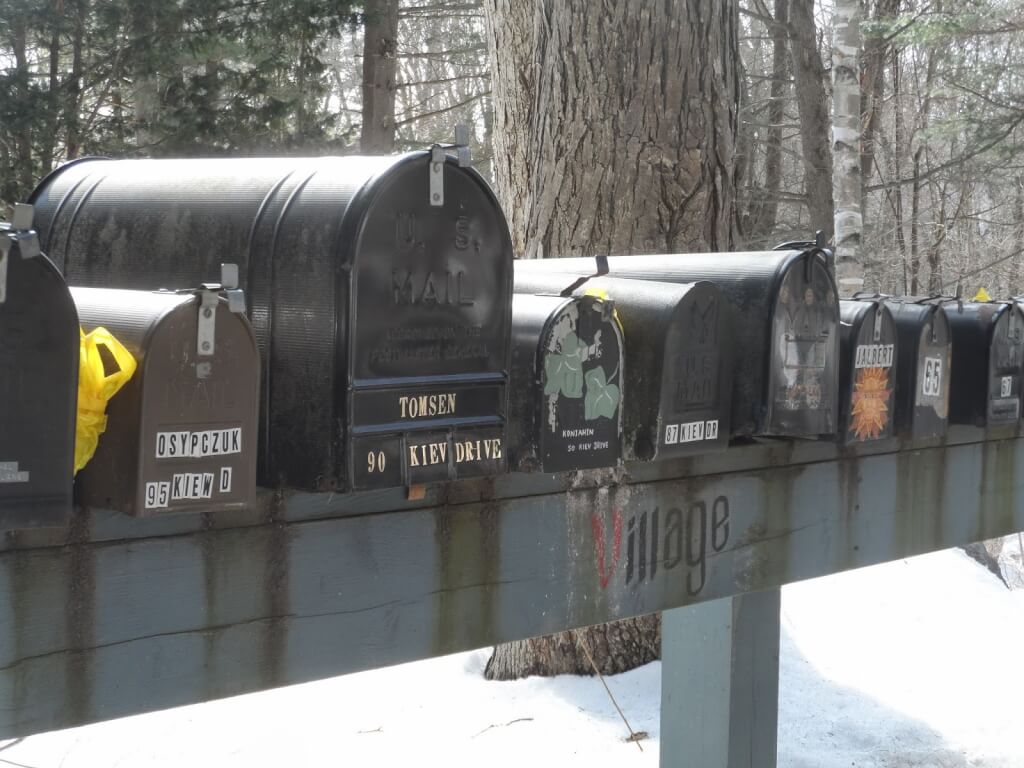
Photo by Victoria Averbukh
In 1988, Churaevka was included in the National Register of Historic Monuments as one of the landmarks of the state of Connecticut. With funds from the Federal Service for the Protection of Historical Objects, the iconostasis and chapel were restored, and its dome was re-gilded.
As for the revival of the Russian community of Churaevka, it seems that now it is not necessary for anyone. So the “All streets end in a dead end” sign is very symbolic.
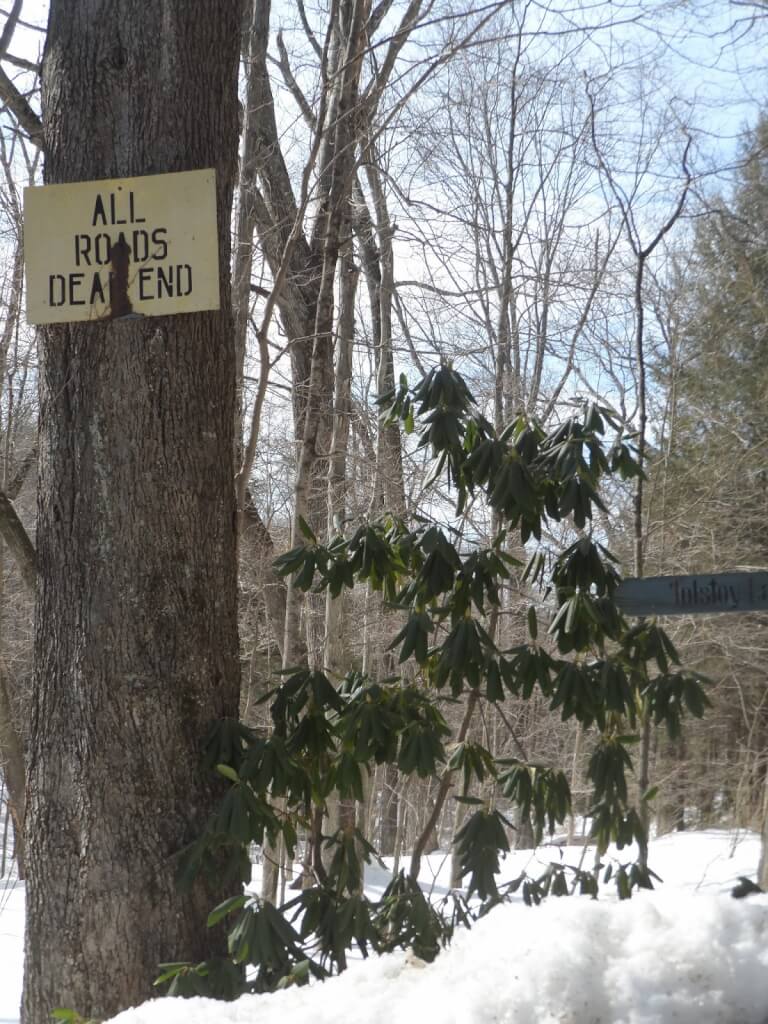
Photo by Victoria Averbukh
Original article published on the site America roads and reprinted with permission of the author.
See also:
Where America Begins: A View From Zero Kilometer
How to earn a whole year traveling the world with your family
How to get to the museums of New York for free
What discounts to museums can get residents of San Francisco. List
How to get to all the museums of Chicago for free
Subscribe to ForumDaily on Google News
Do you want more important and interesting news about life in the USA and immigration to America? — support us donate! Also subscribe to our page Facebook. Select the “Priority in display” option and read us first. Also, don't forget to subscribe to our РєР ° РЅР ° Р »РІ Telegram and Instagram- there is a lot of interesting things there. And join thousands of readers ForumDaily New York — there you will find a lot of interesting and positive information about life in the metropolis.











